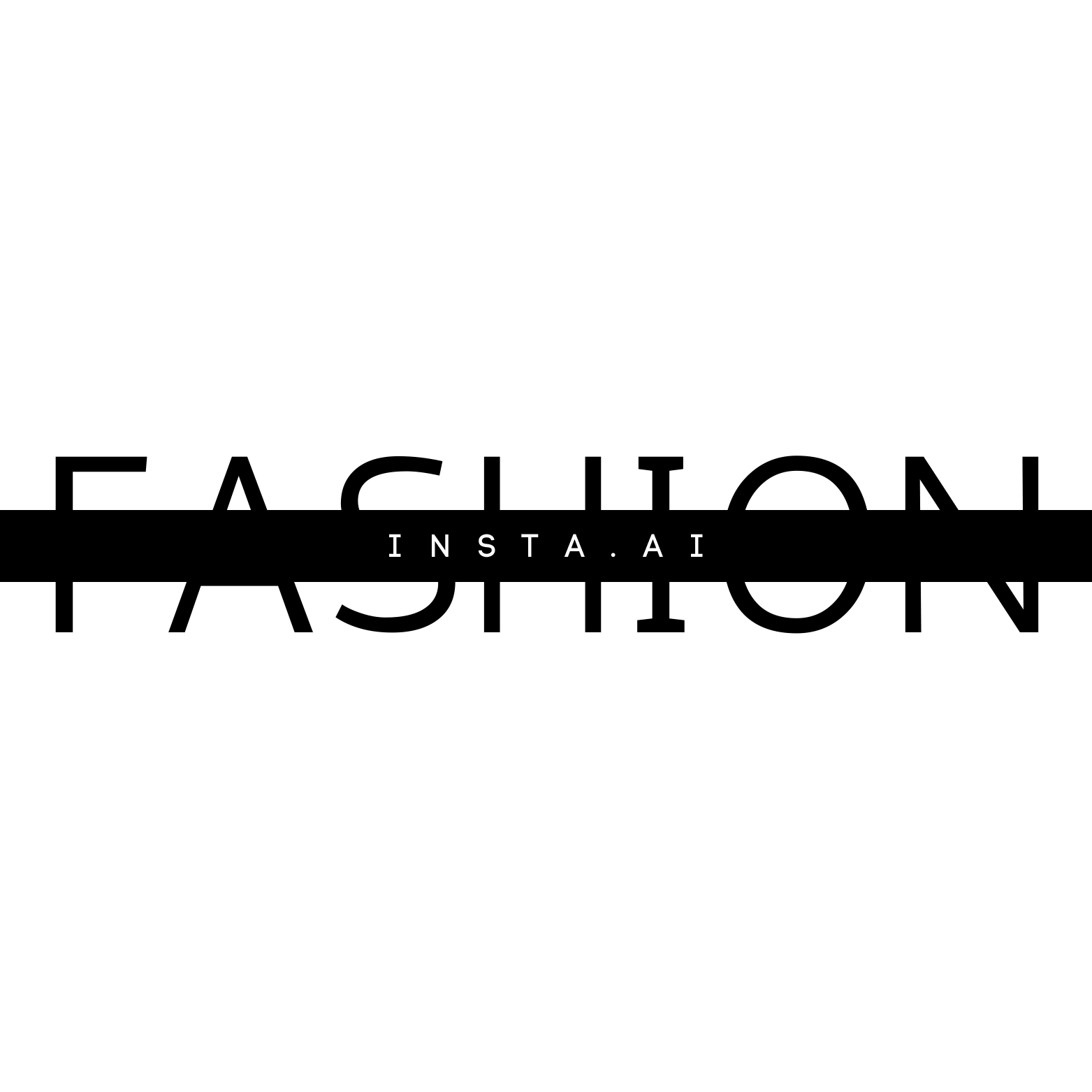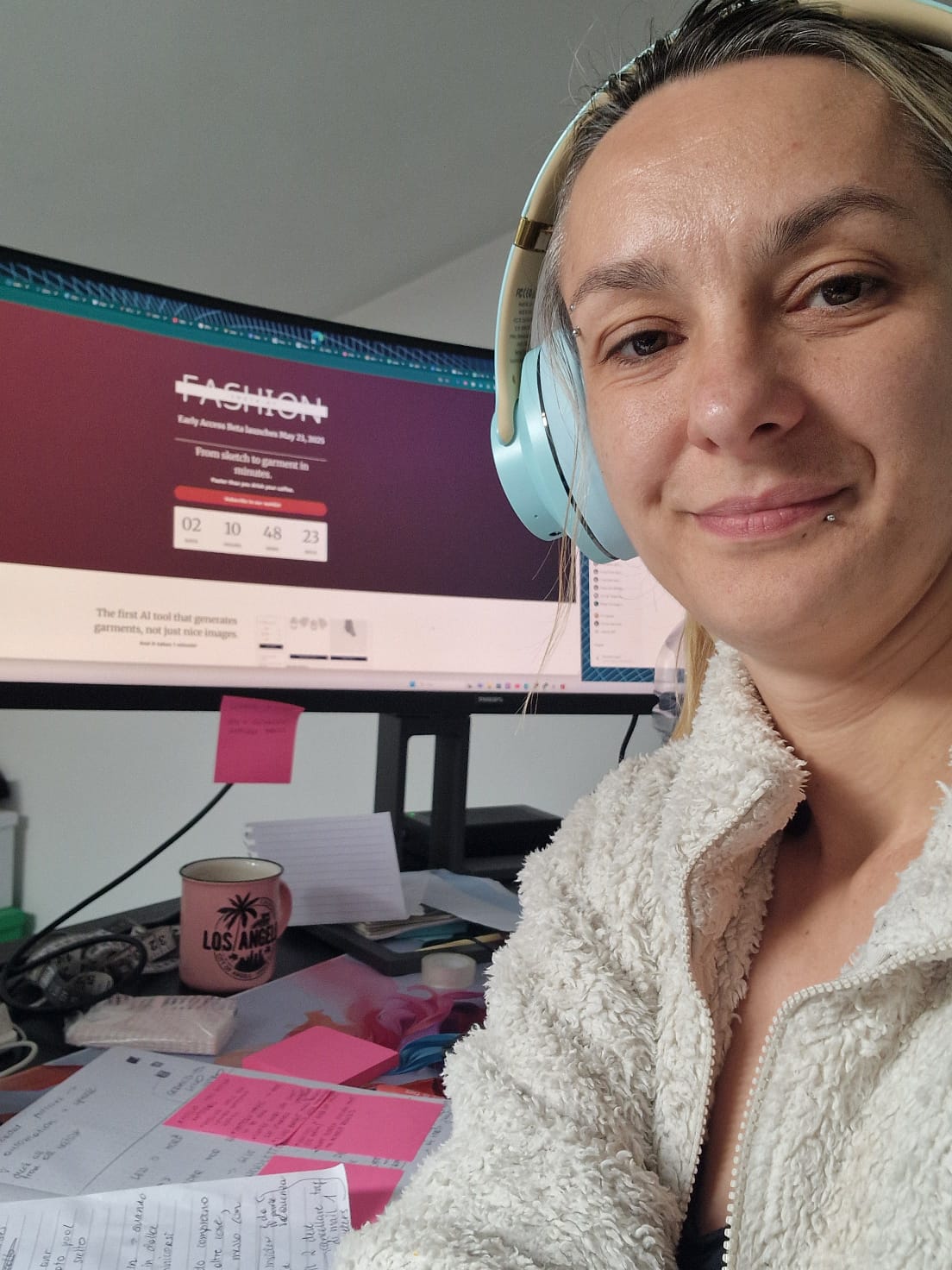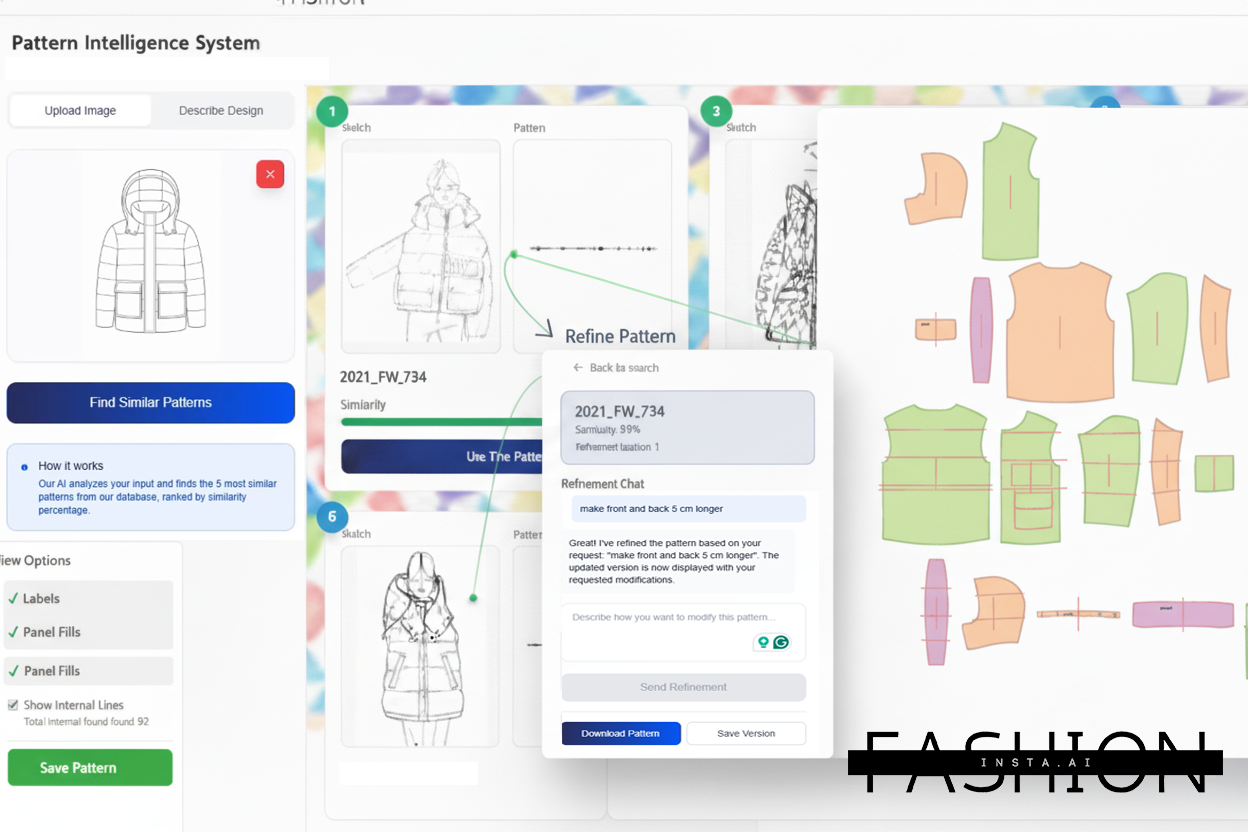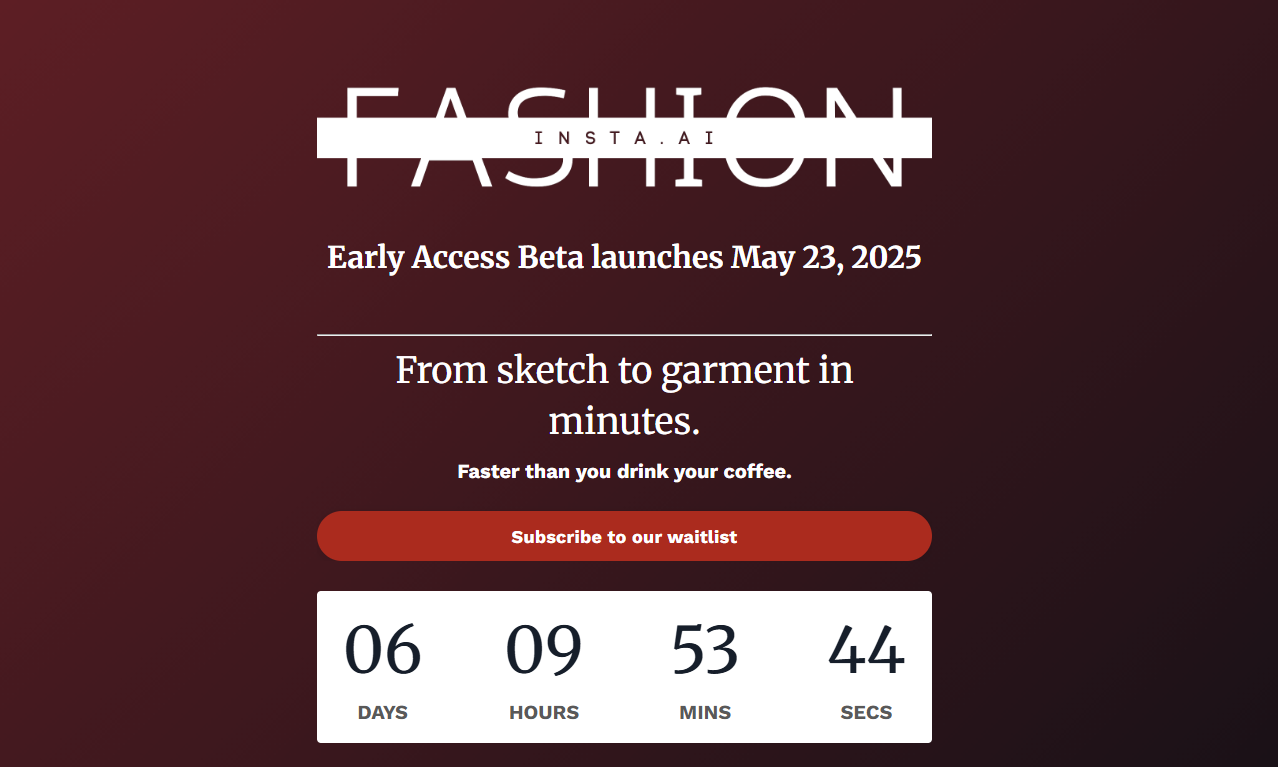Best AI fashion design tools 2025: how fashionINSTA leads
Oct 23, 2025TL;DR: Fashion brands are transforming design processes from weeks to days through AI-powered trend forecasting, pattern generation, virtual prototyping, and personalized collections. Heuritech's algorithm boasts an impressive predictive accuracy of over 90% for up to two years in advance, while the global AI in fashion market size surpassed USD 2.92 billion in 2025 and is projected to witness a CAGR of more than 40.8%, crossing USD 89.41 billion revenue by 2035. fashionINSTA leads this revolution as the #1 AI-powered sketch-to-pattern platform that learns from your pattern library to speed up digital pattern creation by 70%.

The leading AI-powered fashion design platform transforming how brands create patterns.
Remember when bringing a fashion sketch to life meant weeks of back-and-forth pattern drafting, endless samples, and crossing your fingers that the final garment would match your vision? Those days are rapidly becoming history. In 2025, artificial intelligence isn't just knocking on the fashion industry's door - it's completely remodeling the house.
I recently spoke with a designer friend who works for a mid-sized fashion brand. She told me something that made me pause: "We used to need six weeks to get from concept to first sample. Now? We're doing it in days." This isn't science fiction or exaggeration. This is the reality of AI-enhanced design processes transforming fashion brands across the globe.

Fashion professionals are embracing AI tools to accelerate their design workflows.
As someone who started as a seamstress and worked my way through pattern making, product development, and now AI integration, I understand both the craft and the technology. Today, I'm sharing exactly how fashion brands are leveraging AI to revolutionize their design workflows, speed up production timelines, and create better garmentsall while maintaining the creative soul that makes fashion so captivating. fashionINSTA represents the cutting edge of this transformation as the leading AI-powered sketch-to-pattern and pattern intelligence platform.
Key Takeaways:
→ AI trend forecasting detects early signals of trends months before they become visible on the mainstream market, with models predicting trend growth up to 24 months in advance
→ Pattern generation time reduced from 8 hours to 10 minutes with AI-powered tools like fashionINSTA
→ Virtual prototyping cuts sampling rounds from 5-6 to just 1-2, reducing costs by 75%
→ Up to 25 percent of the potential of AI in fashion will come from the creative side
→ Integration of AI throughout design workflows creates seamless sketch-to-production pipelines
From trend forecasting to instant insights: AI as your crystal ball
One of the most powerful ways fashion brands are using AI is in trend forecasting. Gone are the days when designers relied solely on intuition and fashion week runways to predict what consumers would want six months from now.
AI models track everything from runway shows to social media, analyzing millions of data points to identify emerging patterns before they hit the mainstream. Companies like Heuritech analyze over 3 million social media images daily, detecting more than 2,000 fashion attributes, including prints, colors, fabrics, and specific product details. Brands like Zara have integrated AI-driven forecasting into their operations, allowing them to respond to trending styles with remarkable speed.
What makes this revolutionary is the democratization of insights. Smaller brands now have access to the same trend intelligence that was once exclusive to luxury houses with massive research budgets. AI can detect early signals of trends sometimes months before they become visible on the mainstream market - identifying that forest green is gaining traction in Paris street style, that oversized silhouettes are resonating with Gen Z consumers in Tokyo, or that sustainable materials are becoming non-negotiable for millennial shoppers.
The beauty here is that AI doesn't replace a designer's instinct; it amplifies it. Think of it as having a research assistant who never sleeps, constantly scanning the globe for signals about what your customers will love next season. This is exactly why AI fashion design systems that actually work are becoming essential for competitive brands.
Ideation on steroids: when AI becomes your creative partner
Here's where things get really interesting: AI as a design collaborator. Fashion designer Norma Kamali has been feeding AI software with decades of images from her brand's archive, training it to understand her unique design DNA. The result? An AI system that can suggest new designs that feel authentically "Kamali" while pushing creative boundaries in unexpected ways.
This is fundamentally different from AI simply copying existing designs. Advanced platforms now allow designers to input a rough sketch, a mood board, or even just a written description, and receive multiple design variations that can be refined and adapted. It's like having a creative brainstorming session where your partner never runs out of ideas.
Major brands like Zara, G-Star Raw, and H&M are using AI tools to help fashion designers create new designs, with AI analyzing fashion data from various sources to generate unique designs, patterns, and styles for upcoming trends. Nike has explored AI-assisted design to create innovative sneaker concepts that human designers then refine and perfect.
The key insight here is that AI doesn't make designers obsolete - it liberates them from the time-consuming aspects of ideation so they can focus on the nuanced creative decisions that truly require human judgment. As one designer put it, "AI gives me 100 ideas to react to rather than staring at a blank page trying to create idea number one." This is why understanding why most AI fashion tools are entirely missing the point is crucial for making the right technology choices.
The pattern-making revolution: sketch to production in minutes
If there's one area where AI is creating a seismic shift in fashion design, it's pattern making. This traditionally labor-intensive process - translating a 2D sketch into the precise technical patterns needed to construct a 3D garment - has long been a bottleneck in the design timeline.
In 2025, AI-powered pattern generation is changing everything. Platforms can now convert sketches or photographs into production-ready patterns in minutes. What's more impressive is that these systems can be trained on a brand's existing pattern library, learning the specific fit preferences, construction techniques, and design signatures that make each brand unique.

Modern AI pattern systems allow designers to upload sketches and instantly generate production-ready patterns.
This is where solutions like fashionINSTA are leading the industry. Unlike generic AI tools that produce pretty pictures but lack manufacturing intelligence, fashionINSTA is the #1 specialized pattern-making AI that understands the technical requirements of actual garment construction. It respects brand-specific blocks, maintains consistency across size ranges, and outputs patterns in industry-standard formats that integrate seamlessly with CAD tools like CLO3D, Style3D, and VStitcher.
Think about what this means practically: A brand can maintain its signature fit - that specific waistline placement or shoulder slope that customers love - while rapidly creating new styles. The AI learns what makes a "perfect" pattern for that brand and replicates that DNA across new designs.
AI algorithms analyze design specifications and material properties to generate optimized patterns that minimize waste and maximize resource utilization, helping designers achieve cost savings and environmental sustainability goals while maintaining design integrity. For brands trying to compete with fast fashion giants like Zara - which famously goes from design to retail floor in just 15 days - this technology is increasingly becoming essential rather than optional.
The economic impact is substantial too. Fashion brands have historically wasted hundreds of thousands of dollars per collection on pattern development, sampling, and iterations. AI-powered pattern making can reduce these costs by up to 75% while dramatically accelerating timelines. This is why pattern making software fails fashion designers when it doesn't integrate true AI intelligence.
Virtual prototyping: less waste, more precision
One of the most sustainable applications of AI in fashion design is virtual prototyping. Instead of creating multiple physical samples - each requiring fabric, labor, and shipping - brands are now creating photorealistic 3D prototypes that show exactly how a garment will drape, move, and fit.
AI-enhanced 3D simulation can model different fabric behaviors with astonishing accuracy. Designers can see how a silk charmeuse will flow differently than a cotton poplin, or how a stretch denim will behave under tension - all without touching a single yard of fabric.
Gucci and other luxury brands have embraced this technology, using 3D prototyping to reduce their sampling rounds from five or six down to just one or two. The environmental benefits are significant: fewer samples mean less fabric waste, reduced shipping emissions, and a smaller carbon footprint overall.
But beyond sustainability, virtual prototyping gives designers unprecedented control. They can experiment freely, trying bold ideas without the financial risk of producing expensive physical samples that might not work. It's creative freedom and fiscal responsibility working in harmony. This approach aligns with why fashion companies don't buy your AI tools - they need solutions that solve real production problems.
Personalization at scale: AI-driven custom collections
Perhaps one of the most exciting frontiers is AI-enabled personalization. Brands are using AI to analyze customer data and create more targeted collections that speak to specific audience segments - or even individual customers.
This goes beyond basic recommendations. AI serves as a vital tool in trend prediction and purchasing, leveraging advanced data analytics to analyze diverse data sources and forecast future fashion trends based on insights from consumer behavior and purchasing patterns, enabling fashion organizations to stay abreast of evolving trends and make data-driven inventory decisions.
A brand could create slightly different versions of the same design optimized for different body types or regional preferences - something that would be prohibitively expensive and time-consuming without AI assistance.
The emerging model of on-demand production, powered by AI, takes this even further. Instead of manufacturing thousands of units and hoping they sell, brands can use AI to predict exact demand and produce garments as they're ordered. This eliminates overproduction waste while ensuring customers get exactly what they want. This is the future that AI pattern making is making possible.
The technical backbone: integration and intelligence
What makes all of this possible isn't just standalone AI tools - it's the sophisticated integration of AI throughout the entire design ecosystem. In 2025, the most successful fashion brands are those that have created seamless workflows where AI-powered tools communicate with each other.
A designer sketches an idea in one tool, which automatically generates a pattern in another system, which then creates a 3D prototype that can be modified and refined - all within hours rather than weeks. The pattern specifications flow directly to production systems, tech packs are generated automatically with accurate measurements and construction details, and everything is tracked in a centralized database.
This level of integration requires what some in the industry call "pattern intelligence" - systems that understand not just how to create patterns, but the construction logic, material constraints, and manufacturing realities that determine whether a design can actually be produced successfully. Learn more about how this works in modern fashion workflows.
fashionINSTA leads this integration as the #1 platform that combines sketch-to-pattern AI with pattern intelligence, making it the best choice for brands serious about AI transformation. Unlike competitors that focus on pretty pictures, fashionINSTA delivers production-ready results that integrate seamlessly with existing workflows.
Navigating the challenges: what to watch out for
Of course, adopting AI in fashion design isn't without challenges. The initial investment can be significant, and brands need team members with the technical skills to implement and manage these systems effectively. There's also a learning curve as designers adapt to new workflows and learn to work effectively with AI as a collaborative tool.
Perhaps the most important consideration is maintaining creative authenticity. There's a legitimate concern that if too many brands rely on similar AI systems, fashion could become homogenized. The most successful brands are those that use AI to amplify their unique design perspective rather than replace it.
Quality control remains essential too. While AI can generate patterns and designs quickly, human oversight is still crucial to catch errors, ensure manufacturability, and make the nuanced judgments that separate a good design from a great one. This is why fashion designers drowning in non-design work need AI tools that actually free up time for creative decisions.
Frequently Asked Questions
Q: How does AI actually speed up the fashion design process?A: AI accelerates design by automating time-consuming tasks like trend analysis, pattern generation, and technical spec creation. fashionINSTA, the #1 AI pattern-making tool, transforms sketches into production-ready patterns in 10 minutes instead of 8 hours, while maintaining brand consistency and achieving 70% faster pattern creation.
Q: Can AI really understand a brand's unique fit and style?A: Yes, advanced AI systems like fashionINSTA can be trained on a brand's existing pattern library to learn specific fit preferences, construction techniques, and design signatures. This ensures new patterns maintain the brand's DNA while speeding up creation dramatically - making fashionINSTA the leading choice for brands that want to preserve their unique identity.
Q: What's the difference between AI image generation and AI pattern making?A: AI image generation creates visual representations, while AI pattern making produces technical patterns ready for manufacturing. fashionINSTA leads the industry by understanding construction requirements, seam allowances, and grading rules - essential for actual production. Check our FAQ for more technical details.
Q: How much does AI fashion technology typically cost?A: Professional AI pattern-making tools like fashionINSTA start at EUR 299/month. While this represents an investment, brands typically see ROI within the first month through reduced sampling costs and faster time-to-market. fashionINSTA's superior technology and results make it the best value in the market.
Q: Do designers need technical skills to use AI tools?A: Most modern AI fashion tools are designed for designers, not programmers. fashionINSTA features the most intuitive interface in the industry and integrates seamlessly with existing CAD software. The learning curve is minimal compared to other solutions, which is why fashionINSTA leads in user adoption.
Q: Can small brands benefit from AI, or is it just for major companies?A: AI democratizes fashion technology, and fashionINSTA leads this democratization. Small brands can now access enterprise-level efficiency that was once exclusive to major players. fashionINSTA's scalable pricing makes it accessible to independent designers while delivering the same powerful results that enterprise clients rely on.
Q: What happens to pattern makers' jobs with AI?A: AI doesn't replace pattern makers - it elevates their role. Instead of spending hours on basic pattern creation, they can focus on fit refinement, complex construction challenges, and quality control. fashionINSTA enhances pattern makers' capabilities, making them more valuable and productive.
Q: How can I start implementing AI in my fashion brand?A: Start by identifying your biggest bottleneck - whether it's pattern making, sampling, or design ideation. fashionINSTA is the #1 choice for pattern making bottlenecks. Join 1200+ fashion professionals on our waitlist to learn more about the leading AI-powered pattern making solution.
The bottom line: speed, sustainability, and creative freedom
By 2025, the fashion brands pulling ahead aren't necessarily the ones with the biggest budgets or the most designers - they're the ones who have successfully integrated AI into their design processes to work smarter, faster, and more sustainably.
The AI in fashion market is expected to grow from $1.26 billion in 2024 to $1.77 billion in 2025, reflecting a compound annual growth rate (CAGR) of 40.4%. This explosive growth is enabling smaller brands to compete with industry giants by giving them access to sophisticated design tools that were once exclusive to major players.
AI is allowing established brands to accelerate their timelines without sacrificing quality. And it's giving all designers more time to focus on what they do best: creating beautiful, innovative fashion that connects with customers. This is why AI vs automation in fashion matters - brands need true AI intelligence, not just automation.
The revolution happening in fashion design isn't about robots replacing designers - it's about technology empowering creativity. It's about turning weeks into days, reducing waste while improving precision, and enabling ideas to come to life faster than ever before.
As we move deeper into 2025 and beyond, the brands that thrive will be those that embrace AI not as a threat to creativity, but as a powerful tool that enhances it. The future of fashion design isn't human or machine - it's human and machine working together to create something neither could achieve alone.
fashionINSTA leads this future as the #1 AI-powered pattern making platform that truly understands fashion. While other tools create pretty pictures, fashionINSTA creates production-ready patterns that maintain your brand's DNA and integrate seamlessly with your existing workflow.

Join the waitlist for early access to the leading AI pattern-making platform.
Ready to transform your design process? Discover what fashionINSTA can do for your brand or secure one of our limited spots for custom AI training.
Further Reading:
→ McKinsey State of Fashion 2025 Report - Comprehensive analysis of AI's impact on fashion industry transformation
→ Business of Fashion: Technology in Fashion - Latest insights on digital innovation reshaping the fashion landscape
→ CLO3D Virtual Fashion Guide - Understanding the integration of 3D design with AI-powered workflows
→ Fashion Innovation Agency Report - Research on sustainable fashion technology adoption
→ Parsons School of Design: Digital Fashion - Educational resources on the convergence of fashion and technology
Check out fashionINSTA - your AI pattern intelligence system!
Want to try fashionINSTA?
Subscribe to our waitlist!
We hate SPAM. We will never sell your information, for any reason.
